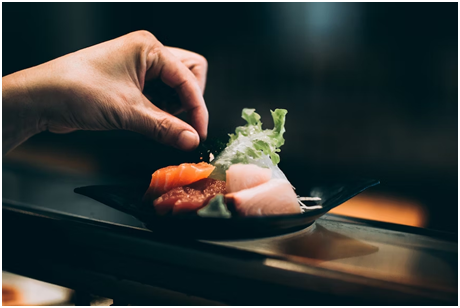
The demand for specialized dining experiences across various cuisines continues to rise. From gluten-free to nut-free, vegan to lactose-intolerant - the culinary world is constantly evolving to embrace inclusivity. Today, as a chef, you stand to face the challenge of catering to customers with diverse dietary needs - all while maintaining the integrity and flavor of your culinary creations. But how easy is it? Not quite. Being a chef means dealing with multiple food allergies and unique dietary preferences of diners on a regular basis. Here’s how you can keep up with them; As a culinary creator, you should proactively educate yourself about various food allergies and dietary restrictions. By staying informed about common allergens, such as gluten, dairy, nuts, and shellfish, as well as nutritional preferences, like vegetarianism and veganism, you will be able to understand the specific needs of your customers better. Keeping in touch with such knowledge via culinary and bakery courses equips you to make informed ingredient choices and create menu options that work for your audience at large. The easiest solution to this challenge? Maintaining open lines of communication with customers. Ensuring that guests feel open and heard enough to communicate their dietary restrictions and allergies when making reservations or placing orders is absolutely essential. By engaging in an open and judgment-free dialogue, you can better accommodate individual needs and ensure a safe and enjoyable dining experience. It also involves accurately conveying potential allergens or dietary concerns associated with specific dishes. Being a chef, you should work towards professional enhancement opportunities to broaden your knowledge and skills about food inclusivity. This includes attending workshops, seminars, or specialized training in online pastry and culinary courses. Such programs are quite flexible and provide comprehensive education on food allergies, dietary restrictions, and specific techniques for accommodating diverse needs. Using this knowledge can be quite beneficial in crafting inclusive dining experiences. As a chef, it’s vital that you are proficient enough in your craft to be able to adapt your recipes and menu items to cater to specific nutritional requirements. This involves finding suitable ingredient substitutions to replace common allergens or incorporating alternative cooking techniques. By being creative and flexible, you can provide a diverse range of choices that cater to various nutritional needs of your diners without compromising on taste or quality. To prevent cross-contamination and allergen exposure, you should consider implementing dedicated food preparation areas for customers with food allergies. These areas should be separate from the main kitchen and equipped with tools and utensils specifically designated for allergy-free meal preparation. Maintaining strict cleanliness and hygiene protocols in these areas is extremely important to ensure the safety of customers with dietary restrictions. Want to learn these tricks from seasoned professionals? Enrol in APCA’s online pastry and culinary courses now! Learn these and other practical tips, and make your cooking inclusive for anyone and everyone. Keeping yourself updated with different allergens and dietary requirements across cuisines can seem like a difficult task. But with these five tips, it’s incredibly easy to do so as a chef. So, start following them from today. For more such blogs, check out APCA Chef Online. Enroll in our curated online pastry and culinary courses today and uplevel your everyday cooking!
So today, let’s help you with this. Read this blog and unfold five tips to instill all round inclusivity in your cooking. Let’s start!
5 Ways Through Which You Can Make Your Cooking More Inclusive1. Education & Awareness

2. Clear Communication With Customers

3. Upskilling

4. Ingredient Substitutions & Modifications

5. Dedicated Food Preparation Areas

Wrapping Up